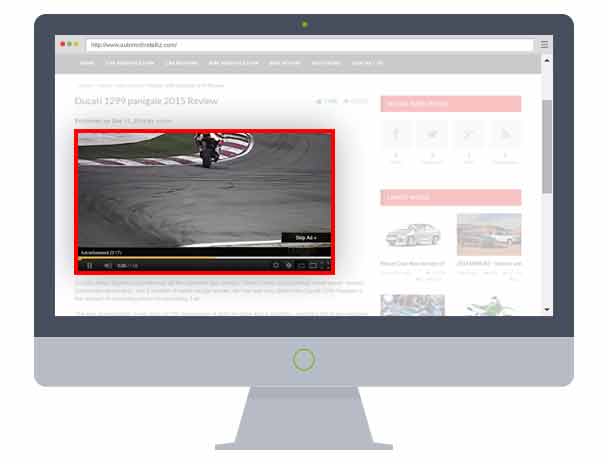
We can define display advertising as a form of advertising that delivers a commercial message visually using as images, text, flash, logos, animations, audio, videos, photographs, or other graphics. The main aim of display advertising is to deliver general advertisements and brand messages to all the site visitors. According to a new research, eMarketer states that Facebook and Twitter will takeover 33% of display ad spending market share by the year 2017.
Nowadays, the internet is filled with display ads of all sizes. Investments in display advertising are only expected to increase in the years to come. The moment we talk CTR in display advertising it refers to the likelihood of a user clicking on your online initiative. It is a measure of the percentage of clicks advertisers receive out of total ad impressions. Attaining a high CTR is crucial to your PPC success. So what should you know about the new shades and types of display advertising?
Types of display advertising available:
Online ads have become a daily part of internet life. It is necessary to understand the ecosystem of display advertising. There are various types of ad inventory in display advertising and it’s vital to understand it while selecting an ad inventory to advertise across the web.
Banner ads:
They are widely known as image-based advertisements that often appear in the top, side and bottom sections of websites. They comprise of various design, size, and functions. You’ll find them in all sorts of blogs, news-based websites, and specialized web communities.

Video ads:
A short video is played for the user. It can be programmed to play automatically or it can be user-activated. Their functionality varies greatly. Some allow users to volume adjustment, rewind, fast-forward, however, others offer no controls. One thing almost all these ads do is a link to an advertiser’s site.

Rich Media Ads:
These are known as the flash files that may expand or enlarge when the user interacts on a mouse over or at auto- initiated features.
Interstitial:
Ads that are displayed on web pages before expected content, i.e. before the target page is displayed on the user’s screen.
Know more about mobile ads and why it carries such significance?
Mobile design and optimization can no longer be considered as secondary, or an add-on. According to a recent study, web users are almost twice as likely to share their content from mobile devices as they are from their desktops or systems. If your social sharing buttons work on your desktop but not on mobile, you’re definitely missing out a lot on your online branding potential. The outcome will be a lot of people won’t be able to see your content, simply because your content isn’t shareable from a mobile device. Mobile isn’t the future, it’s the present.
Why targeting and re-targeting so important in display advertising?
Ad exchange escalates transparency and targeting by auctioning impressions in real-time amongst the multiple bidders, allowing the publishers to get the best price on their space and accurate targeting for the advertiser.
These ads are shown normally on various websites, apps, social media, display network. Site placement advertising comprises of placing a particular ad on specific site determined by you. This was the original way most of the website owners tried to monetize the internet and are still very prominent today. Proper placement of your ads helps you to create and obtain visibility.
Merging one or more different targeting methods will reduce the possible impressions of your ads, but it will leave you with an exceedingly well-targeted ad groups. Display remarketing works by showing display banner advertisements to visitors after they have left your site. This is done via the cookies a website sets in your browser. It allows advertisers to target former visitors and provide an incentive for returning. Your ads are highly targeted and it only shows to visitors who have already been on your site, visitors have been pre-qualified. You don’t have to worry about irrelevant ad impressions.
Social media is escalating the pace of display advertising:
Have you heard of Facebook, Twitter, LinkedIn, Instagram? Of course, you have. What you may not realize is that social media can be used as a form of online advertising, and Twitter or Facebook ads are excellent examples. Most of the people use these social media networks to hang out with their friends and engaging in entertainment or conversations. However, you can target these people out there as they can turn out to be your potential customer. There are now entire books being written about social media ROI, so this tells you that you need to be careful not to waste a lot of time in busy work without evaluating the results.
However, all these social media do have its advantages as it uses an advertising system that is very easy to implement and offers a wide coverage on the website. Only specific social media users that are within the exact demographic you choose will be able to see the advertising.
Vertoz works with a gamut of advertisers and publishers and figuring out which ad exchange is right for you. Using RTB enabled platform and nexus between top ad exchanges across the world help the publisher to attain maximum revenue, relevant advertisers and higher fill rates, while advertisers can promote their products and services on relevant websites. This helps in accurate targeting so that you don’t waste or lose your money on people who are not going to be interested in what your website has to offer. Click here for further information.

